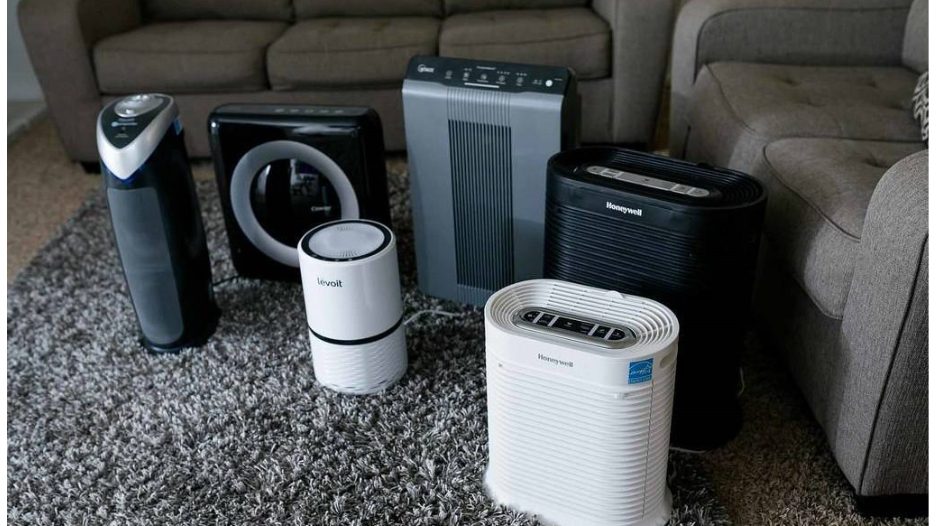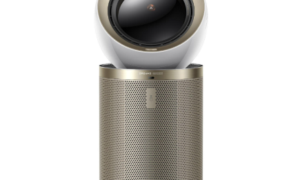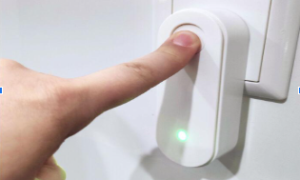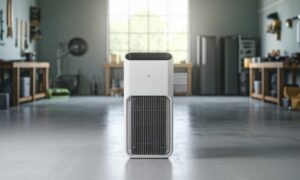Undoubtedly, clean air serves as a fundamental component of optimal health and overall wellness. The focus here is not simply on the absence of unpleasant scents, but rather the quality of the surrounding atmosphere. With the prevalence of dust, allergens, pollutants, and bacteria in metropolitan areas, it can be challenging to avoid these airborne agents. Installing an air purifier provides an effective solution to this predicament.
An air purifier is a device that, truth be told, would make a fine addition to any household (and ideally, one’s workplace as well). Even the most pristine and refined cities cannot boast of ideal ecology. Inevitably, the air is contaminated by noxious fumes, harmful substances, and ordinary dust. The counsel of physicians to air out one’s quarters multiple times per day crumbles under the weight of harsh reality: the air that we let in is anything but fresh or pure.
Air purifiers represent a relatively straightforward and easy-to-maintain solution to this issue, capable of remedying the problem permanently. It’s worth noting that they are useful not solely in urban apartments; even if one resides in bucolic surroundings, they remain susceptible to various allergens and dust. These devices prove equally beneficial in sizable offices, where they can mitigate the risk of collective colds in the autumn and winter months and sustain a healthy microclimate. In sum, air purifiers possess the power to avert allergies, reduce the likelihood of colds, alleviate asthma, and ensure the perpetual high quality of indoor air.
If you are interested in models of air purifiers for large rooms, we recommend reading the article https://myintelligenthouse.com/best-air-purifier-for-1200-sq-ft/
The Types of filters
Th functionality of purifiers relies on no mysterious forces. Instead, they operate by way of filters featuring varying degrees of finesse. Distinct filters employ diverse technologies, each type geared towards fulfilling its own specific purpose. Certain models tackle solely dust, while others purify gases. A select few are even capable of rendering air surgically sterile.
All purifiers include a preliminary filter, serving as the initial, coarse dust filter. This component safeguards both the internal filters and walls of the device from contamination while preparing the air for subsequent cleansing.

Carbon filters fall into the category of refined filters that effectively eliminate gases and vapors from the air. They are not only used in air purifiers, but also in recirculation hoods in kitchens. However, some gases such as formaldehyde, nitrogen dioxide, and low molecular weight gases cannot be absorbed by charcoal. Simply put, charcoal filters are effective in protecting against harmful impurities in an urban environment, but they are not sufficient to completely purify the air. These filters need to be replaced periodically, on average, once every six months; otherwise, they themselves become a source of toxins.
On the other hand, electrostatic filters function based on the principle of an ionizer. They saturate the incoming air with positive ions, which attach to all solid particles and are attracted to negatively charged plates. This way, contaminants in the air are deposited on the filter plates. The larger the plates, the more effective the purification process. Periodic manual cleaning of electrostatic precipitators, by simply rinsing them with water, is recommended at least once a week. The ion filter effectively removes dust, soot, and allergens but is not effective against toxins and volatile substances.
HEPA filters, which may be familiar to you from vacuum cleaners and ventilation systems, owe their name to an English acronym that stands for High Efficiency Particulate Arrestance, or High Efficiency Particulate Retention. The corrugated fiber structure of HEPA filters is highly efficient at trapping dust, with the number of curves and folds determining the extent of air purification – up to 99% of particulate matter greater than 0.3 micron can be removed, including plant pollen, fungal spores, animal and human dander, and other allergens.
HEPA filters are designed to be replaceable, as they tend to clog with dust and lose their shape over time, necessitating complete replacement. The recommended frequency of replacement is usually indicated on the cleaner model itself, and is crucial to ensure that the filter not only continues to effectively purify the air, but also allows air to pass through at all.
Photocatalytic filters represent the most advanced type of filter available today. These ingenious filters decompose toxic impurities through the influence of ultraviolet rays upon the surface of the photocatalyst. Their performance is outstanding, as they destroy toxins, viruses, bacteria, and any odors present. Domestic cleaners generally employ relatively weak photocatalytic filters, as otherwise, one could achieve not only cleanliness but sterility, akin to that found in an operating room. However, this is also a disadvantage, for the photocatalyst can destroy not only toxins but also all useful inclusions, rendering the surrounding air lifeless. For home use, photocatalytic filters constitute an excellent prophylactic measure against allergies and colds. The filter itself typically does not require replacement, but the ultraviolet lamp is susceptible to wear and tear.
It should be noted that the aforementioned filters are not always present in the same cleaner model. Depending on their number and combination, different degrees of air purification are achieved. Thus, one filter constitutes one-stage air purification, two filters constitute two-stage purification, and so forth. A HEPA filter, for example, can solely eliminate dust but cannot tackle odors or gases. For comprehensive air cleansing, one requires, at minimum, one fine filter and one coarse filter. Purifiers with a five-stage air purification system are deemed the most effective; although they are, of course, much more expensive than their counterparts, their performance is highly impressive.
Performance and capacity
To make a prudent choice when acquiring a purifier, it is of utmost importance to ensure it can handle the volume of air in your room. To achieve this, two closely related parameters must be taken into account: the area to be serviced and the airflow rate.
The area to be serviced is the simplest criterion to consider when selecting a device. One only needs to know the approximate square footage of their rooms and choose a suitable purifier from the available options. It is advisable to opt for a device that is slightly larger than the measured area to ensure quicker and more efficient air cleaning. Purifiers with a capacity ranging from modest 2-8 square meters to large, productive units that can service up to 200-260 square meters are widely available on the market.
Air exchange is a more precise parameter to consider. It denotes the volume of air that passes through the unit per hour. To understand this, it is necessary to first calculate the volume of the air in the room by multiplying the room’s area with the height of its walls (e.g., S 40 m² by H 2.5 m = V 100 m³). The resulting value – again with a margin of plus – should be sought among the available purifiers. Choosing a more powerful purifier will ensure that the air is treated more quickly. Conversely, a purifier with a smaller air exchange rate may not be able to keep up with its task, particularly if ventilation is frequent.
The electrical power consumption of the purifier is a secondary indicator, which is directly dependent on its performance. Large, efficient purifiers for 200 m² areas cannot be low-powered, while smaller room purifiers do not require high power. However, purifiers consume very little electricity in general, so even the most powerful unit usually consumes no more than 180 watts – just a little more than a standard light bulb.

Additional Features
The parameter of noise level warrants your attention if you are considering a purifier with a fan. Otherwise, the device will operate almost silently. Typically, room air purifiers produce up to 50 dB of noise, comparable in level to daytime noise or a hushed conversation. Although sleeping with 40-50 dB of noise may be discomforting, during the day, a purifier is unlikely to cause disturbance. Models with noise levels exceeding 50 dB are usually high-performance, oversized units featuring robust fans designed for larger rooms.
Select the type of control that appeals to your personal preferences. It may be mechanical, comprising buttons, relays, or switches, or electronic with a touch screen display.
The timer function is useful for programming the device to operate during specific hours, such as when you are away from home. Additionally, the remote control adds convenience for maximum ease of use.
Various indicators are crucial to consider.
The filter clogging indicator will alert you to the status of your filters, prompting you to replace or wash them, depending on their type.
The air condition indicator provides you with an opportunity to scan your surroundings, assess the cleaner’s efficiency, and adjust its performance accordingly. With this indicator, you will know when the purifier can rest or when it requires activation.
The size of the cleaner depends on its performance. Compact, low-power air purifiers are typically tabletop, while stronger devices imply floor placement. Serious units that service areas up to 250 square meters with large filters require wall mounting because of their sizable dimensions.
You might be interested in inexpensive air purifiers – https://verywellhome.com/best-affordable-air-purifier
Selection tips
Are you or a member of your household experiencing respiratory issues due to excessive airborne dust? If so, an electrostatic cleaner is an essential device to alleviate the situation. Concerned about the harmful effects of polluted urban air? Consider incorporating a charcoal or photocatalytic filter to mitigate the issue. In addition, for added convenience, select a model equipped with air purity control to function automatically and keep you informed of air quality levels.



































